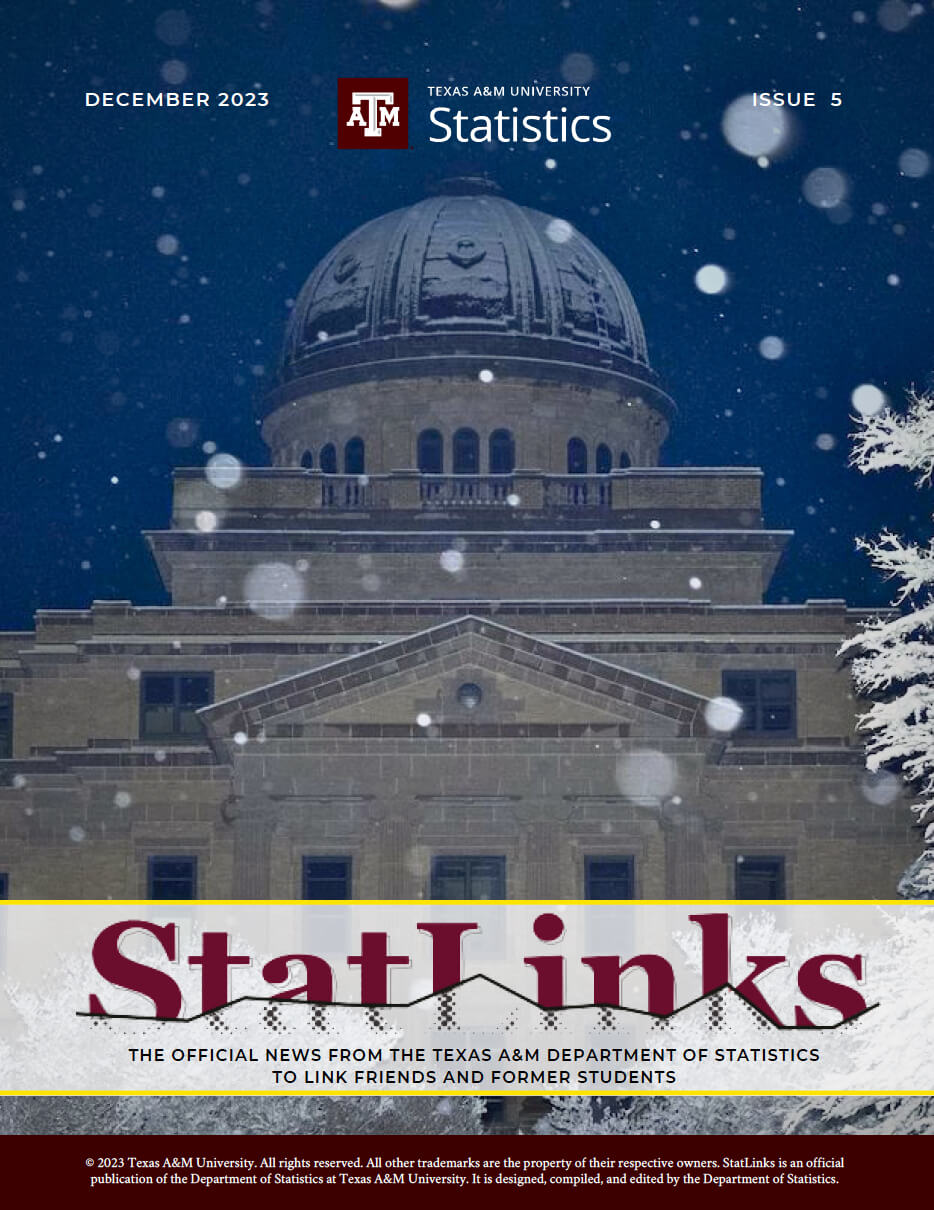Department of Statistics
Texas A&M University
Department of Statistics, Texas A&M University, College Station, TX 77843-3143
447 Blocker, (979) 845-3141 (phone), (979) 845-3144 (fax), tamustat@stat.tamu.edu (email)
Head: Simon J. Sheather, Assistant Head: Michael T. Longnecker, Graduate Director: P. Fred Dahm
1. History:
- Founded in 1962 as Graduate Institute of Statistics under director H.O. Hartley, charter member of College of Science in 1970, renamed Department of Statistics in 1984. Offers MS and PhD and a statistics option under applied math bachelors. Has produced 260 Masters and 160 PhDs.
2. Mission: Why we Exist
- The mission of the Department of Statistics is to enhance the national and international reputation of Texas A&M University through the production of ground-breaking research; to attract, develop and retain emerging academic talent, and to provide high quality teaching to our own students as well as those in service courses.
3. Vision: A Picture of the Future
- Core purposes: To generate outstanding contributions in the area of research, not only to the core of statistics, but also its applications to other disciplines. To provide the highest quality education to both on-campus and distance students, by maintaining an outstanding learning environment, in order to produce graduates who will make a difference to academia, government or business.
- Core values: Encouraging collaborative research within the Statistics department and across other departments at Texas A&M University. Developing, maintaining and broadening relationships with outstanding researchers across TAMU and other major universities. Creativity and innovation in terms of harnessing new technologies in order to enhance the learning experience. A dedication to teaching and to its continued improvement. Creating a work environment for all faculty and staff that fosters collegial, high integrity behavior, and that encourages and rewards people to strive for their best.
- Long term goals: Be ranked in the top 5 statistics departments in the US in terms of research. Become the number one provider of distance-based graduate education in statistics. Expand the department’s leadership role in the use of technology in the classroom. Continue to grow the oncampus graduate program in statistics.
3. Faculty:
- 26 tenure track faculty (2 distinguished, 14 full, 5 associate, 5 assistant professors), 8 non-tenure track.
- Faculty research interests
4. Graduate Program:
- 65 students, half MS, half PhD; average 10 Masters, 10 PhDs per year.
- Three Hispanic PhD’s in past 5 years (half of all nationwide).
- Very active internship program.
5. Teaching:
- 5,100 headcount in 1995; 3582 undergraduate, 388 stat graduate, 1130 non-stat graduate.
- Top 5 in graduate SCH’s, #1 in outside graduate SCH’s, 300 non-stat graduate committees per year.
- Computer lab an integral part of pre-calculus undergrad courses (2800 students per year)
- All faculty teach undergraduate courses.
6. Research Areas of Concentration:
- Bayesian Methods
- Bioinformatics
- Biostatistics
- Environmental Statistics
- Measurement Errors
- Nonparametric Statistics
- Semiparametric Models
- Time Series
7. Recent Examples of Major Applications of Foundational Works:
- Modeled spread of environmental pests.
- Developed EPA methods for toxicological risk assessment of acute chemical inhalation exposures.
- Source apportionment of chemical pollutants. ( Proceedings of the National Academy of Science)
- Modeled ozone exposure in Houston (1996 JASA editor’s invited address at national joint meetings).
- Analyzed water levels in Laguna Madre (helped Texas win defense of a multi-million dollar boundary suit).
8. Funding:
- University for FY 96: $1,555.5K (faculty salaries), $237.5K (assistantships), $176.8K (staff+ops).
- External: 1985: $290K, 1990: $688K, 1995: $1,014K ($510K federal, $345K state, $159K industry).
9. Strategic Plans:
- Have met last five year plan.
- Future priorities: Further expand external funding particularly in environmental and life sciences areas, form a second computer lab, expand distance teaching of graduate courses to system units.

